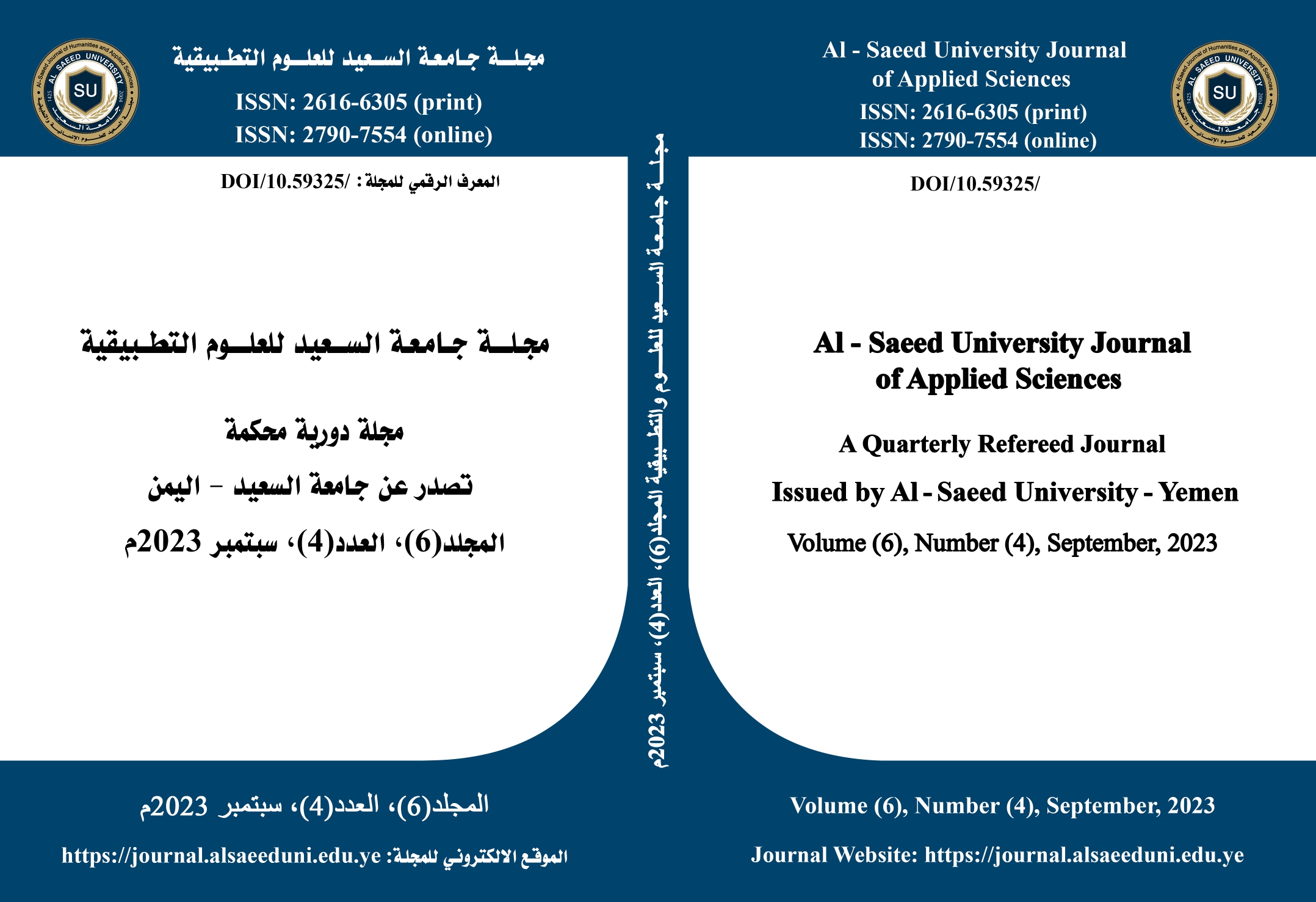Seroprevalence of Hepatitis B virus among some Healthcare Workers in Public Hospitals in Taiz City-Yemen
الكلمات المفتاحية:
Seroprevalence، hepatitis B virus، Hepatitis B surface antigen، health care workersالملخص
Hepatitis B virus infection (HBV) is a world health problem. Health care workers (HCWs) are at high risk to exposure and infection with HBV. This study aims to determine the seroprevalence of HBV infection among HCWs and recognize the risk factors associated with their infection in public hospitals in Taiz city, Yemen.
Across sectional study including HCWs from public hospitals in Taiz city which was conducted from 15/8/2021 to 20/9/2021.
A questionnaire was performed to collect data from participants on sociodemographic (age, gender) and risk factors (job, vaccination status, exposed to injuries). Blood samples were collected. HBV markers (HBsAg and HBc antibodies) were detected by using Enzyme linked immunosorbent assay (ELISA) test. Data of testing results and questionnaire were analyzed by SPSS. Among 179 participants the overall seroprevalence of HBsAg was 1.68% and 44.7% were detected exposure to HBV (positive for HBsAg and HBc antibodies). A high seroprevalence was found among males, young age HCWs and midwifes, and a highexposure to HBV was reported among physicians’ assistances. More than two-thirds of workers (68.2%) were non-vaccinated. All seropositive HBsAg participants were non-vaccinated. Most of HCWs (81.6%) were exposed to needle stick injury (NSI) and other sharp injuries. Most of these results are from NSI (76.5%). Laboratory technicians and nurses were at the highest risk exposure for NSI and others stick injuries. Older age HCWs, laboratory technicians and Yemen Swedish Hospital were found to be at the highest risk exposure for NSI and others stick injuries.
Continuous vaccination, occupational safety and training among HCWs must be reassessed to reduce HBV infection and the associated risk factors.



